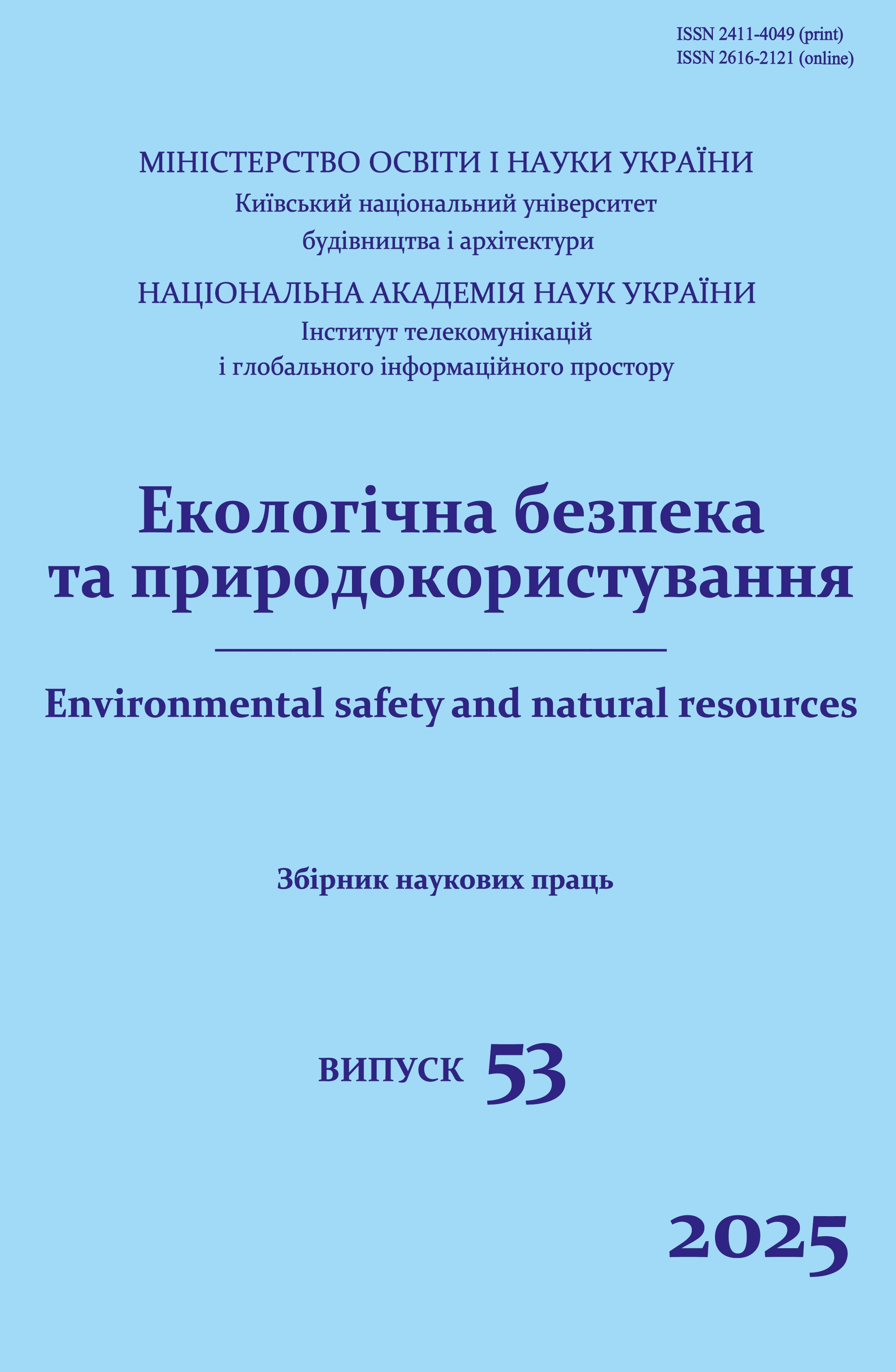The problem of prediction of the transmission coefficient using neural networks with a limited quantity of data
DOI:
https://doi.org/10.32347/2411-4049.2025.1.155-163Keywords:
deep learning, low pass filter, convolutional neural networks, metamaterialsAbstract
The article discusses available approaches to predicting the transmission coefficient of metamaterials. In the paper was proposed different approaches that create the possibility of using data from various open sources, as well as the possibility of encoding complete structural information about the composition of metamaterials. A neural network with two inputs was designed, which is based on a three-dimensional convolution operation. Using these approaches, the training of an artificial neural network was carried out, and the results of transmission coefficient prediction were presented. The nature of metamaterial use can be determined by the predicted coefficient, but the resulting root mean square error still does not allow using such a neural network as a substitute for existing approaches. The paper presents an analysis of the obtained results, in which possible approaches to solving the problem of the amount of data are proposed, as well as solving the problem of different intervals of electromagnetic radiation in the dataset using the architecture of a three-dimensional transformer.
References
Lopez, M., Dupont, T., & Panneton, R. (2023). A mass-spring analogy for modeling the acoustic behaviour of a metamaterial. INTER-NOISE and NOISE-CON Congress and Conference Proceedings, 265(1), 6295–6301. https://doi.org/10.3397/in_2022_0935
Porfyrakis, P., & Tsitsas, N. L. (2019). Nonlinear electromagnetic metamaterials: Aspects on mathematical modeling and physical phenomena. Microelectronic Engineering, 216, 111028. https://doi.org/10.1016/j.mee.2019.111028
Zharov, A. A., Zharova, N. A., Noskov, R. E., Shadrivov, I. V., & Kivshar, Y. S. (2005). Birefringent left-handed metamaterials and perfect lenses for Vectorial Fields. New Journal of Physics, 7, 220–220. https://doi.org/10.1088/1367-2630/7/1/220
Bowers J. A.; Hyde R. A. et al. "Evanescent electromagnetic wave conversion lenses I, II, III" US Patent and Trademark Office, Grant US-9081202-B2, 14 juli 2015, U.S. Patent 9,081,202.
Zharov, A. A., Zharova, N. A., Noskov, R. E., Shadrivov, I. V., & Kivshar, Y. S. (2005). Birefringent left-handed metamaterials and perfect lenses for Vectorial Fields. New Journal of Physics, 7, 220–220. https://doi.org/10.1088/1367-2630/7/1/220
Ge, L., Li, J., Zhong, K., Wang, Y., Xu, D., & Yao, J. (2023). A thermocouple based on wideband hybrid metamaterial absorber for mid-infrared photo-thermoelectric detector. Optics Communications, 545, 129714. https://doi.org/10.1016/j.optcom.2023.129714
Khatib, O., Ren, S., Malof, J., & Padilla, W. J. (2021). Deep learning the electromagnetic properties of metamaterials – a comprehensive review. Advanced Functional Materials, 31(31). https://doi.org/10.1002/adfm.202101748
Hammond, A. M., & Camacho, R. M. (2019). Designing integrated photonic devices using artificial neural networks. Optics Express, 27(21), 29620. https://doi.org/10.1364/oe.27.029620
Xu, Y., Zhang, X., Fu, Y., & Liu, Y. (2021). Interfacing photonics with Artificial Intelligence: An innovative design strategy for photonic structures and devices based on Artificial Neural Networks. Photonics Research, 9(4). https://doi.org/10.1364/prj.417693
Peurifoy, J., Shen, Y., Jing, L., Yang, Y., Cano-Renteria, F., DeLacy, B. G., Joannopoulos, J. D., Tegmark, M., & Soljačić, M. (2018). Nanophotonic particle simulation and inverse design using artificial neural networks. Science Advances, 4(6). https://doi.org/10.1126/sciadv.aar4206
Shi, R., Huang, J., Li, S., Niu, L., & Yang, J. (2022). Forward prediction and inverse design of nanophotonic devices based on Capsule Network. IEEE Photonics Journal, 14(4), 1–8. https://doi.org/10.1109/jphot.2022.3182050
Cong, L., Srivastava, Y. K., & Singh, R. (2016). Inter and intra-metamolecular interaction enabled broadband high-efficiency polarization control in metasurfaces. Applied Physics Letters, 108(1). https://doi.org/10.1063/1.4939564
Ding, F., Wang, Z., Shalaev, V. M., & Kildishev, A. V. (2015). Broadband high-efficiency half-wave plate using plasmonic metasurface. CLEO: 2015. https://doi.org/10.1364/cleo_qels.2015.ftu1c.6
Huang, C. (2015). Efficient and broadband polarization conversion with the coupled metasurfaces. Optics Express, 23(25), 32015. https://doi.org/10.1364/oe.23.032015
Shaltout, A., Liu, J., Kildishev, A., & Shalaev, V. (2015). Photonic Spin Hall effect in gap–plasmon metasurfaces for on-chip chiroptical spectroscopy. Optica, 2(10), 860. https://doi.org/10.1364/optica.2.000860
Grady, N. K., Heyes, J. E., Chowdhury, D. R., Zeng, Y., Reiten, M. T., Azad, A. K., Taylor, A. J., Dalvit, D. A., & Chen, H.-T. (2013). Terahertz metamaterials for linear polarization conversion and anomalous refraction. Science, 340(6138), 1304–1307. https://doi.org/10.1126/science.1235399
Zozyuk, M., Koroliouk, D., Krysenko, P., Yurikov, A., & Yakymenko, Y. (2023). Prediction of characteristics using a convolutional neural network based on experimental data on the structure and composition of metamaterials. Statistics, Optimization & Information Computing, 11(3), 730–739. https://doi.org/10.19139/soic-2310-5070-1707
Lahoud, J., Cao, J., Khan, F. S., Cholakkal, H., Anwer, R. M., Khan, S., & Yang, M. H. (2022). 3D vision with transformers: A survey. arXiv preprint arXiv:2208.04309.
Lodagala, V. S., Ghosh, S., & Umesh, S. (2023). CCC-WAV2VEC 2.0: Clustering Aided Cross contrastive self-supervised learning of speech representations. 2022 IEEE Spoken Language Technology Workshop (SLT). https://doi.org/10.1109/slt54892.2023.10022552
Downloads
Published
How to Cite
Issue
Section
License
Copyright (c) 2025 Pavlo Krysenko

This work is licensed under a Creative Commons Attribution 4.0 International License.
The journal «Environmental safety and natural resources» works under Creative Commons Attribution 4.0 International (CC BY 4.0).
The licensing policy is compatible with the overwhelming majority of open access and archiving policies.

